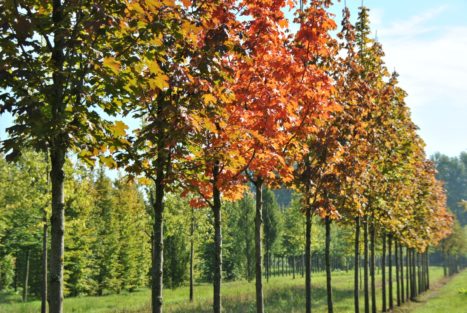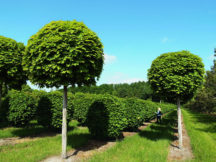Beautiful and strong trees with a dense hipped crown, which, with the advent of autumn, catches the eyes of all passers-by, are often found in park areas. Holly maple, it is also plane-shaped, can also be used for landscaping a personal plot where the plant will bring cosiness, harmony and such a shadow necessary on hot days.
Material Content:
Description of popular varieties
A typical variety is represented by powerful trees with a height of up to 30 m, and sometimes more. A tent-shaped decorative crown is formed by sprawling, downward-facing shoots covered with a reddish bark. Oppositely located leaf plates have a crescent-shaped five- or seven-lobed shape and are distinguished by pointed edges with serrations. Green summer color with the advent of autumn changes to yellow-orange. At the end of spring, you can see the flowering tree-like representative of the flora, in which yellowish flowers bloom, collected 15 pieces in corymbose inflorescences. Lionfish fruits that form after pollination ripen by the end of summer.

Common varieties of acutifolia:
- Globozum - a seven-meter tree with a wide round crown is distinguished by the color of the foliage, which, when blooming, has a pink hue.
- Krimzon King - a decorative variety represented by trees with purple foliage, the red color of which when blooming changes to fall to purple color by autumn.
- Deborah - a tree up to 20 m high with a crown width of 15 m is characterized by an extraordinary color of foliage, which during blooming is red below and green above.Over time, the leaves acquire a brown color, changing at the end of the growing season to orange.
- Royal Red - a variety with red foliage when blooming. In summer, the crown becomes black and red, cast with a metallic sheen.
- Cleveland - the distinctive characteristics of the variety belong to the crown structure, which reaches a diameter of 8 m with a tree height of 12 to 15 m.
- Krimzon Sentry - an elegant tree up to 20 m high with decorative five-leafed red leaves.
Landing maple maple (Acer platanoides) in open ground
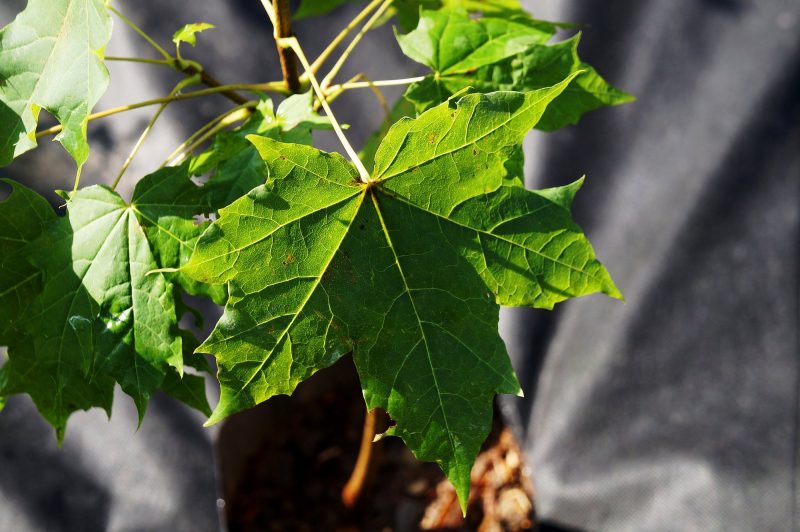
Planting maple is carried out in spring or autumn on sunny, as well as slightly shaded areas with well-drained soil of a neutral or slightly acidic reaction. During group landing, pits are dug up with a distance of 2-3 m from each other, depending on the purpose of the future composition. The diameter of the planting pit should be 4 times higher than that of the seedling root system. The depth remains equal to or slightly exceeds the height of the rhizome in places with a high occurrence of groundwater in order to place drainage material on the bottom. A sapling with a previously soaked root system is lowered into a depression where a little nitroammophoska has already been sent. The pit is filled with a fertile substrate of turf land, humus and sand in a ratio of 2: 3: 1. After completion of planting, the near-stem circle is watered and mulched.
Agrotechnics of cultivation and care
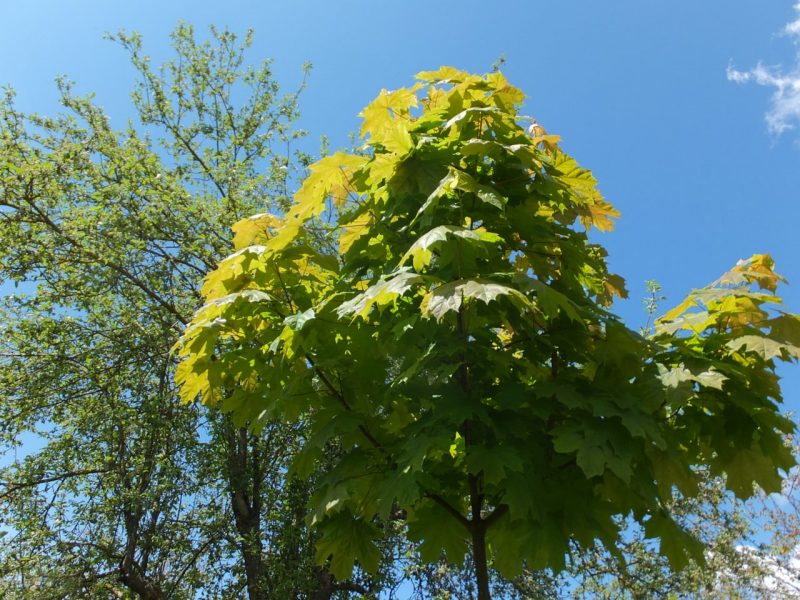
In order for the plane-shaped maple to radiate health and decorate the garden with bright colors, it is necessary to properly care for the tree, observing the required recommendations.
Watering

The species is hygrophilous and needs regular watering, which, in the absence of natural rainfall, is watered weekly in summer, and monthly in spring and autumn (with a consumption rate of 20 liters per plant). The brightened foliage will become evidence of waterlogging and that watering must be stopped for a while.
Soil treatment
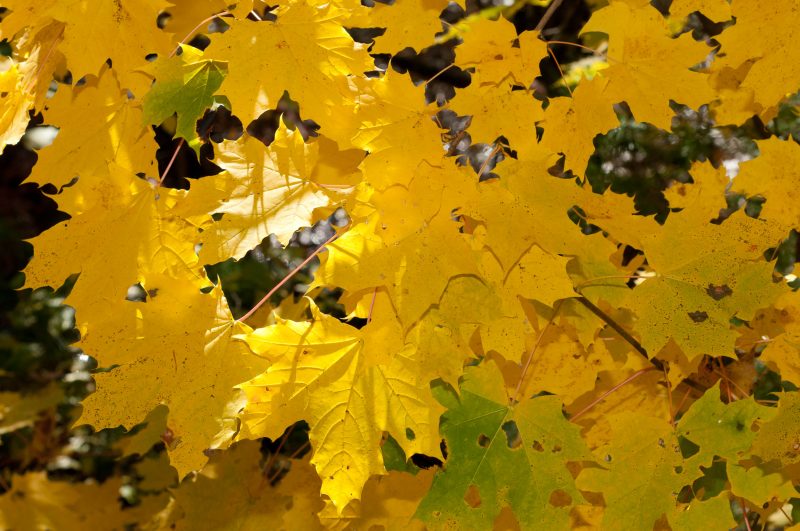
After watering, the near-stem circle loosens with the simultaneous removal of weed vegetation. Several times during the season, the layer of mulch is updated, which also increases soil fertility and nourishes the plant.
Fertilizer and fertilizer
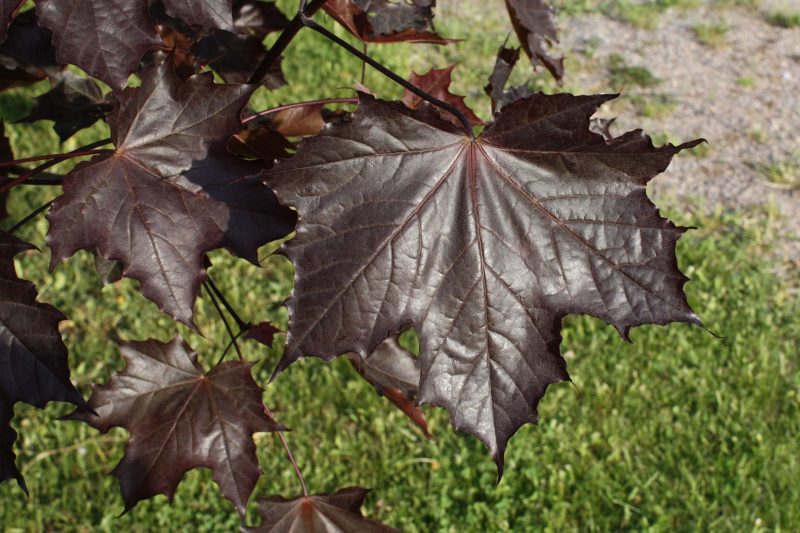
The acutifoliate maple, planted in fertile soil, is fed only from the next season. Top dressing is carried out in spring twice a month, and in summer - 1 time. Organic and mineral fertilizers are used as nutrient complexes, which include nitrogen, phosphorus and potassium.
Pruning maple and crown formation
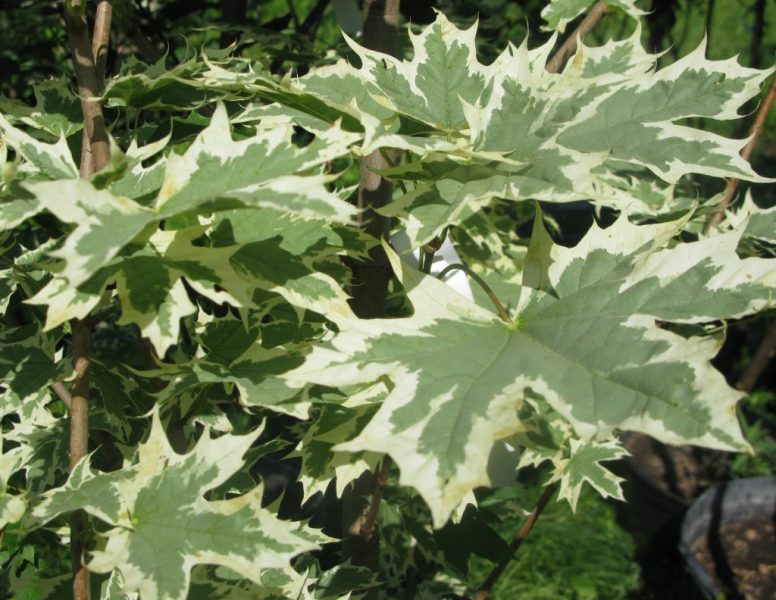
A beautiful spherical crown of a maple is formed naturally. Every spring it is recommended to carry out sanitary pruning, during which patients who are knocked out of the correct ball of the branch are removed, and shoots growing inside are cut out.
Disease and Pest Prevention
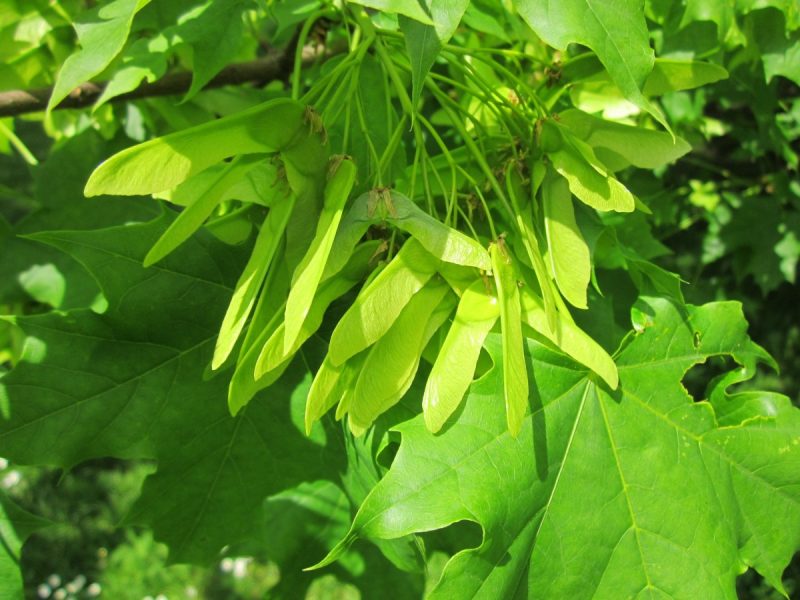
Before budding, it is recommended to spray tank mixtures annually, which will prevent the development of diseases and the settlement of shoots with pests. In the event burgundy spots appear on the bark and the branches dry out, which is a sign of coral spotting, the diseased areas should be removed immediately, and the places of the cuts should be treated with garden var. Among the pests can be noted mealybug, whiteflies and weevils, which will help get rid of the insecticide. As a preventative measure, in autumn it is necessary to rake and burn the entire foliage, destroying the litter for the wintering supply of harmful insects.
Tree propagation methods
A typical variety can be propagated by seeds, however, vegetative methods — propagation by air and root layers — are considered more effective and preserving varietal qualities.
Air layering
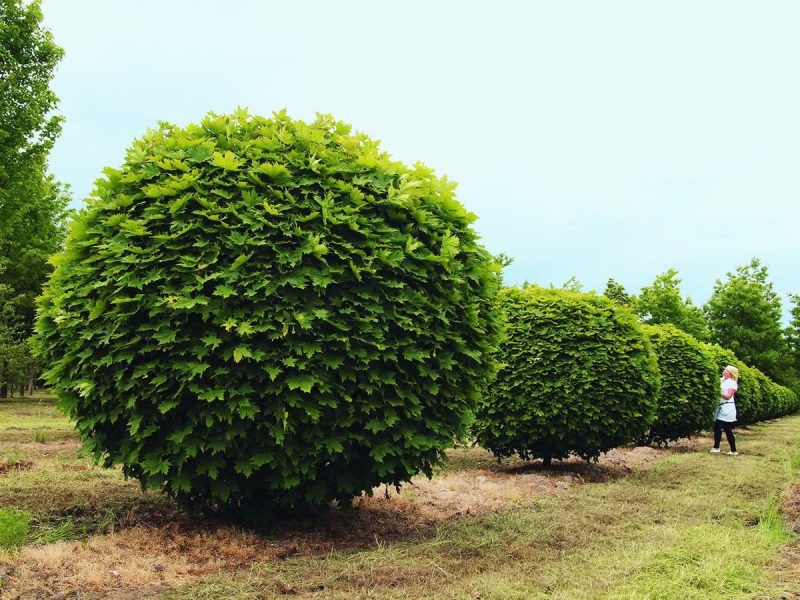
In spring, propagation by air layering is carried out, in which:
- A rather deep incision is made on the selected branch, which is treated with a growth stimulator.
- A toothpick is inserted into the incision, after which the injured place is wrapped in moss, which is fixed with a plastic film.
- Separation from the maternal specimen and landing layering with roots is carried out next spring.
Root layering

A popular method is as follows:
- The most developed shoot is selected.
- Closer to the soil surface, an incision is made on the shoot.
- The overgrowth spills high so that the damaged area is underground.
- During the season, layering is watered and spud.
- The following spring, when the roots develop on the lay, it is separated and planted at a constant place of growth.
Wintering the plane-maple
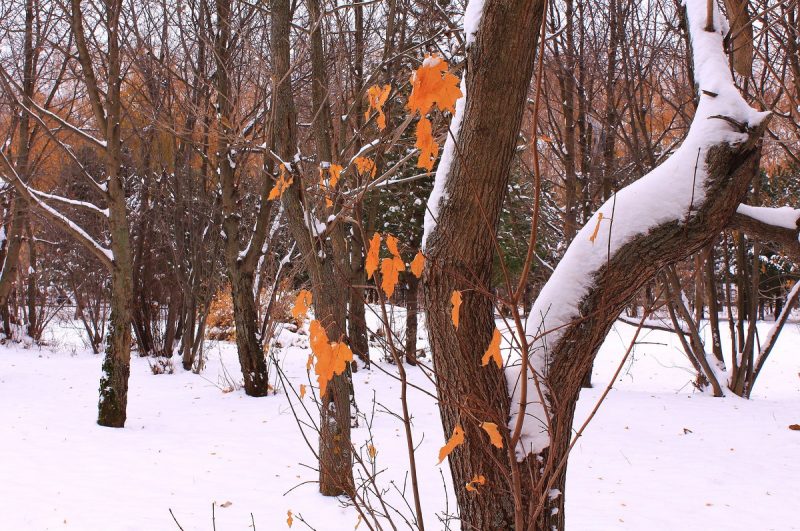
Adult plants winter without additional shelter. However, young specimens should be covered: wrap the stem with burlap, and cover the trunk circle with fir spruce branches.
Landscape design
The use of acutifolia in landscaping vast territories opens up new horizons for design, allowing you to create colorful alleys and bright corners of the park. In the garden, maple trees of various varieties will also help create a colorful fairy tale. However, when decorating the garden area with maple in an ensemble with decorative shrubs or other trees, it is necessary, in addition to selecting flowers, to correctly calculate the size of the crops.
So, a beautiful decorative tree, which until recently adorned only a park area, is gaining more and more popularity every day among gardeners who want to make their garden unique, filled with bright colors.


